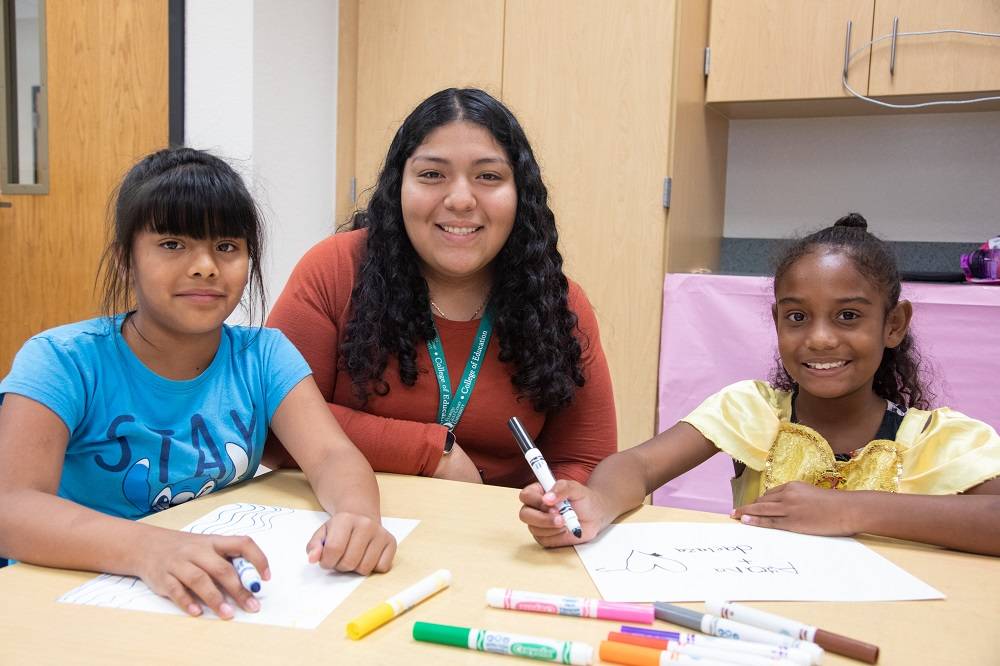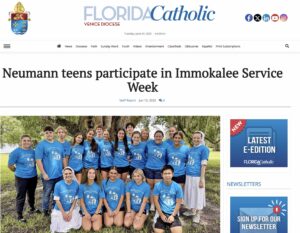Summer vacation is underway for students across Southwest Florida. It’s a time for children and teens to unwind for a little breather after nearly 10 months of learning, studying, testing and achieving developmental milestones.
Students should not completely disengage, however. Learning does not have to stop when the school year ends. In fact, researchers continue to point to summer vacation as an opportunity for students to both catch up if they struggled with any key concepts and get a jumpstart on the next school year. Summer learning loss, also called the summer slide or brain drain, poses a significant challenge for teachers at all levels – preschool, elementary, middle and high school. Educators often spend several weeks in August and September reviewing concepts that students forgot during the summer.
Education is training of the mind, much like exercise is physical training for the body. If athletes skip the gym and eat unhealthy food all summer, they will pay the price once they return. The same concept applies to education. That’s why many parents enroll their children in academic-focused programs like Guadalupe Center’s Summer Enrichment Program, which features credentialed instructors and a true academic curriculum to keep students engaged and learning.
SUMMER LEARNING TIPS FOR PARENTS
Students can keep their brains in tip-top shape without sitting in a classroom all summer, though. In their unofficial roles as summer school teachers, parents can create a series of informal, academic-focused activities that are enjoyable while still serving as excellent back-to-school prep. Parents with children in preschool or elementary school can try these engaging, hands-on activities across core subject areas:
- Science: Visit a state or national park. Visitor centers often have worksheets or scavenger hunts geared toward youth, like finding a fossil or identifying an animal.
- Social Studies: Buy a map or globe, and have children point to a place. YouTube is full of educational and travel videos that show places, people and cultures. Short, five-minute videos can offer a world of information.
- English/Reading: Preschool students should be able to recognize sight words like “and,” “the” and “it.” Mastering these core words increases their fluency and comprehension, and parents can read alongside their children to develop language and listening skills while also stimulating their imagination. Elementary-age students can read books to their parents, pet or stuffed animal.
- History: So much of Southwest Florida is new, but the region is home to many historic places and museums with exhibits covering the region’s environment, culture, automotive history, religion, railroads, archaeology and agriculture.
- Math: Have children perform hands-on math tasks like counting food items and coins, reading numbers on a street sign and calculating time on a clock. These activities might only take a few seconds, but they ultimately keep a child’s mind sharp.
- Foreign Language: Food offers a fantastic, and tasty, way to learn a foreign language. Each week, pick a day and create a menu offering a culinary world tour. On Italian Night, for example, serve a selection of less common pastas like rotini, rigatoni, penne and orzo.
- Art: Drawing, coloring and painting are terrific ways for children to tap into their creativity. Save each piece of artwork and ask children to assemble an end-of-summer scrapbook containing all of their best work.
Summer is a vacation from school, but it shouldn’t be a vacation from learning. Parents are a child’s first teacher, and during the summer, they also are a child’s best teacher.
– By Jim Ragusa, Senior Director of Early Childhood Education at Guadalupe Center.






